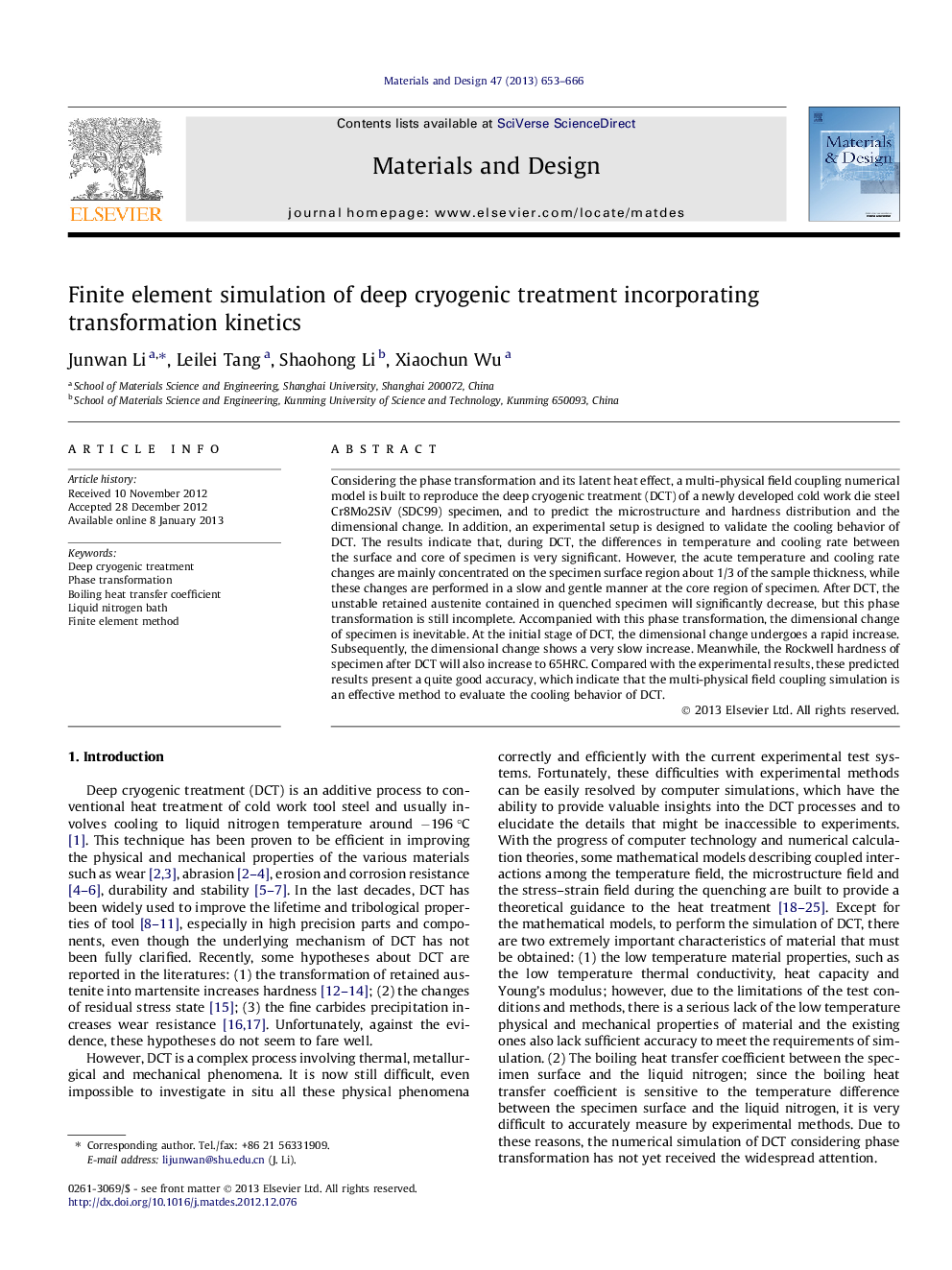| Article ID | Journal | Published Year | Pages | File Type |
|---|---|---|---|---|
| 830096 | Materials & Design (1980-2015) | 2013 | 14 Pages |
Considering the phase transformation and its latent heat effect, a multi-physical field coupling numerical model is built to reproduce the deep cryogenic treatment (DCT) of a newly developed cold work die steel Cr8Mo2SiV (SDC99) specimen, and to predict the microstructure and hardness distribution and the dimensional change. In addition, an experimental setup is designed to validate the cooling behavior of DCT. The results indicate that, during DCT, the differences in temperature and cooling rate between the surface and core of specimen is very significant. However, the acute temperature and cooling rate changes are mainly concentrated on the specimen surface region about 1/3 of the sample thickness, while these changes are performed in a slow and gentle manner at the core region of specimen. After DCT, the unstable retained austenite contained in quenched specimen will significantly decrease, but this phase transformation is still incomplete. Accompanied with this phase transformation, the dimensional change of specimen is inevitable. At the initial stage of DCT, the dimensional change undergoes a rapid increase. Subsequently, the dimensional change shows a very slow increase. Meanwhile, the Rockwell hardness of specimen after DCT will also increase to 65HRC. Compared with the experimental results, these predicted results present a quite good accuracy, which indicate that the multi-physical field coupling simulation is an effective method to evaluate the cooling behavior of DCT.
► Considering phase transformation, FEM model is built to reproduce DCT. ► The low temperature material properties are obtained through experimental tests. ► A temperature measurement setup is designed to validate the predicted results. ► Empirical formula solution is employed to obtain the boiling HTC. ► The cooling behavior and microstructure distribution of specimen are discussed.
